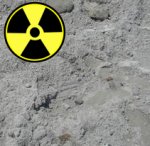Nuclear power reactors aren’t the only source of radioactive waste. The ash left behind from burning coal is radioactive also.
A recent forecast predicted that billions will be diverted from nuclear power investment into renewable energy technologies such as wind and solar as a direct result of the nuclear crisis in Fukushima, Japan. However, more investment could also go into coal, which would represent a big step backwards in the battle against climate change.
Coal ash: toxic and radioactive
Investors may see coal as a safer bet, but nothing could be further from the truth in terms of real safety. The mining and burning of coal aren’t the only environmentally damaging aspects of the fossil fuel. Coal ash, also known as fly ash, is a problem too. It contains contains arsenic, lead and mercury. All of these are incredibly toxic substances.
Coal ash also needs to be stored safely. In December of 2008, a containment wall holding back 40 acres of coal ash based sludge created by the Tennessee Valley Authority’s coal-fired power plant in Kingston burst. The spill ended up spewing over 2 billion litres of waste over 400 acres.
Added to all these risks, kilogram for kilogram, coal ash released from a power plant delivers more radiation than nuclear waste shielded via water or dry cask storage according to an article on Scientific American.
Radioactive elements such as uranium and thorium occur in minute amounts in coal in its natural state. However, when coal burns, uranium and thorium in the resulting fly ash are concentrated at up to 10 times their original levels. A study of people living in close proximity to a coal fired power plant found radiation doses were equal to or higher than doses for people living around nuclear power facilities.
While the chances of experiencing negative health effects from radiation in relation to nuclear and coal-fired power plants are slim; the article reports they are higher if you live close to a coal fired power generation station.
However, that’s little comfort for the people living near the Fukushima plant who have had to evacuate. The latest reports indicate the evacuation area may be increased.
Clean coal not the answer to the coal ash problem
“Clean coal”, a term some consider an oxymoron, doesn’t offer any answers to toxic fly ash waste either – in fact, it takes more coal to generate “clean coal” based electricity because of the extra energy required.
So which is really safer – coal or nuclear power? Likely neither as each have major impacts, both immediate and lingering. The only safe path to a clean power future still seem to be via renewable energy sources.














































